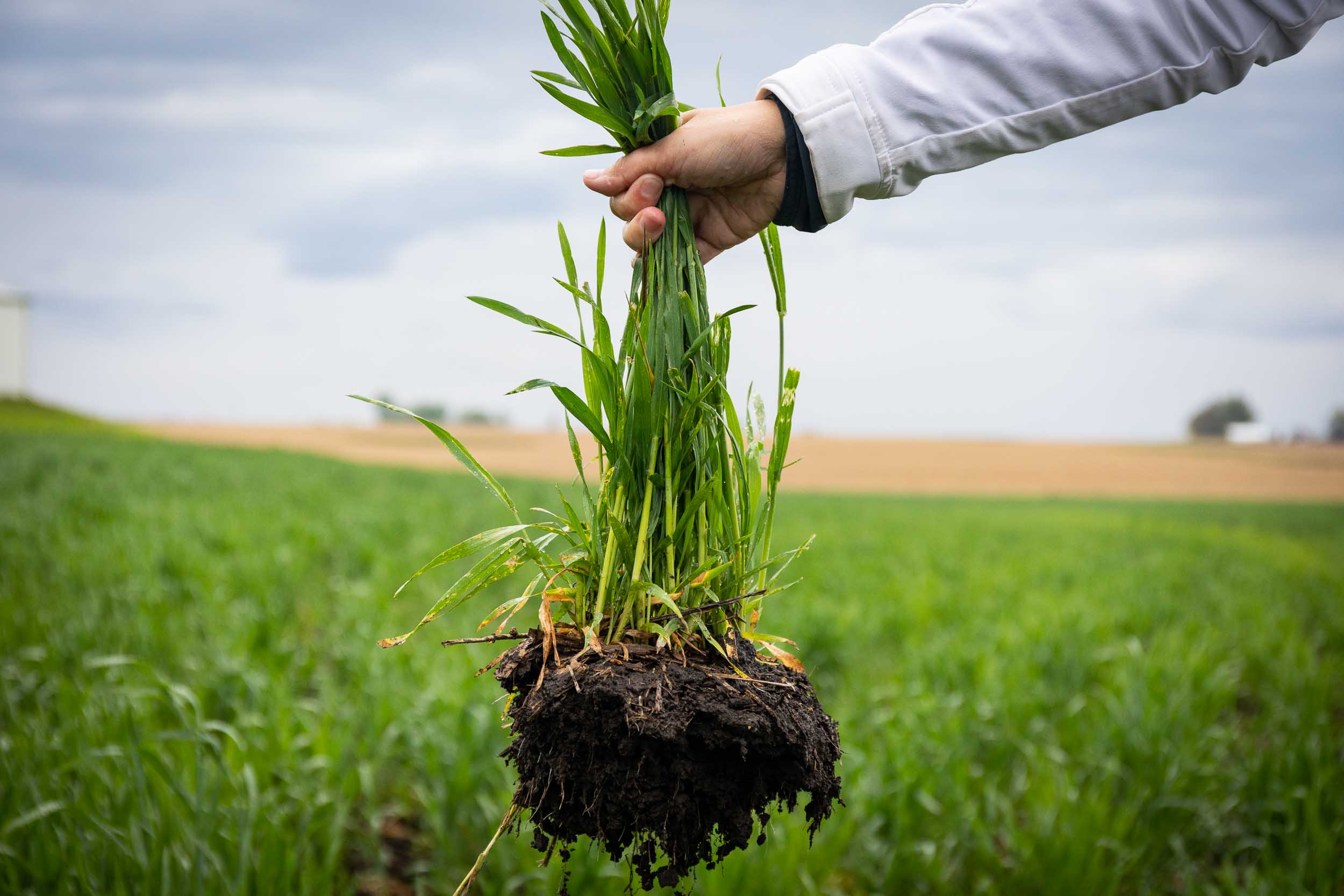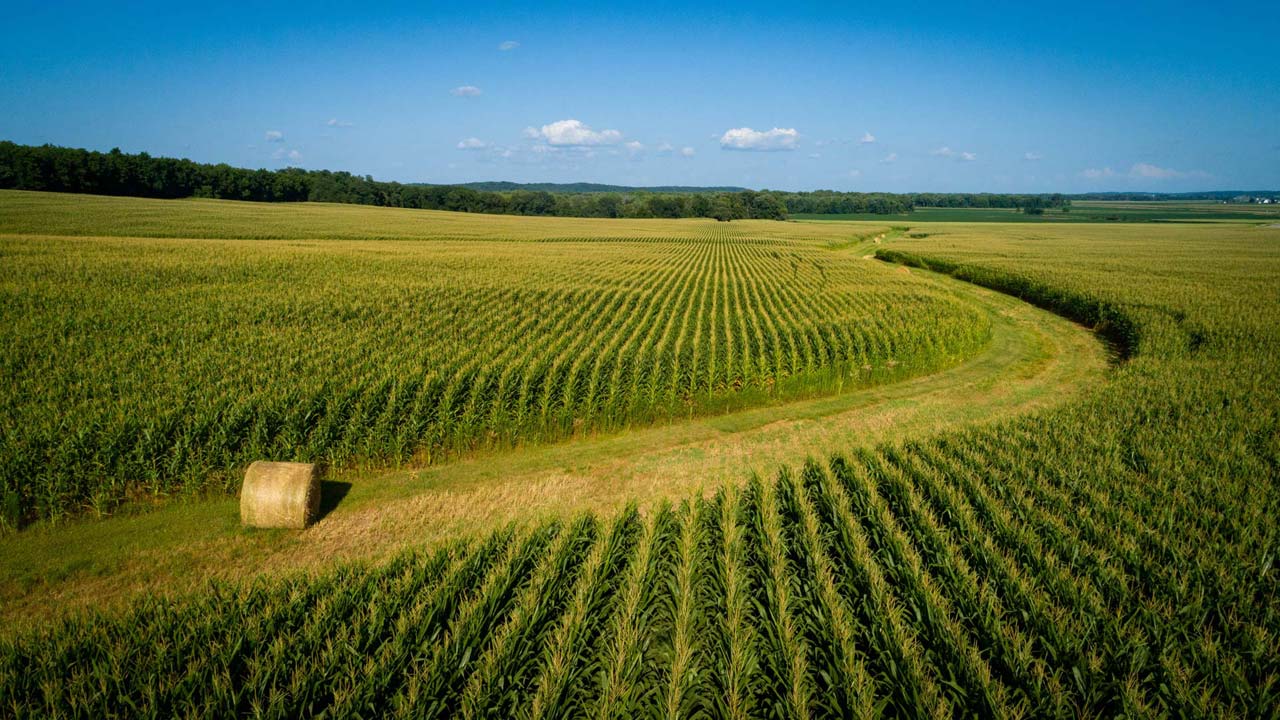2024 June Stewardship Advocate

Iowa Shows Leadership in First Year of New National Cover Crop Program:
The Iowa Corn Promotion Board, Iowa Soybean Association, and the Iowa Agriculture Water Alliance are leading a statewide push toward a national cover crop goal of 30 million acres.
Three Iowa ag partners are celebrating a successful first year of Farmers for Soil Health (FSH), a national cover crop incentive program funded through a USDA (United States Department of Agriculture) Climate Smart grant.
Iowa, a top producer of corn and soybeans, recorded nearly 27,000 acres of cover crops in the first year of the program. That is out of about 80,800 acres nationwide with nearly 100 Iowa farmers enrolled. Both the numbers of Iowa acres and farmers led the nation in the first year of the FSH program.
Producers can receive up to $50/acre over three years for new cover crop acres. The sign-up period has begun for fall 2024 cover crops.
Along with water quality benefits, cover crops can improve soil structure, build organic matter, and reduce costs in other areas of a farming operation.
Learn more about the Farmers for Soil Health program here.
Latest Information:
- Increasing The Adoption of Edge-Of-Field Practices
- Iowa Draft Standards and Technical Notes
- NEW POLL: Farmers Want Congress to Protect Climate-Smart Agriculture in Farm Bill
- New Report Shares Latest Research On Potential For Ag Drainage Water Recycling
- New Career, New Energy: The Importance of Being More Than A Warm Body in the Seat
- USDA to Invest $3 Million to Support Cooperative Soil Science and Soil Survey Research
- IAWA Launches Guide to Compare Iowa Cover Crop Payment Programs
Farmer to Farmer: Laura Foell

Laura Foell and her husband Bill operate a fifth and sixth generation family farm in Sac County near Schaller, Iowa. Laura grew up on a small farm in southern Illinois where they had livestock, crops and hay. She graduated from Southern Illinois University with a degree in agriculture.
Sustainability, legacy and family are passions for Laura. She says, “Many years ago, we attended a class to look at ways that we could farm profitably and pass it on to the next generation. We have a mission statement for our farm: We want to farm sustainably to ensure that the next generation can farm and leave the soil better than we when started farming. The sixth generation started with our son Tom who worked in the seed industry for thirteen plus years before joining us back on the farm. Our daughter Mary and her husband John live in Indiana but are still very involved in major decisions on the farm.”
Laura met her husband Bill when she was working for the University of Illinois Extension and he was a sales manager for a local coop. She says, “In 1984, we had a chance to come back to Iowa and return to his family farm to farm with his father. Between 1984-1991 we tried no-tilling corn and soybeans using traditional crop protection products and farming methods. In 1991, we bought one of the first no-till drills in the area and have not stopped no-tilling soybeans since. We live on a hard surface road and had many onlookers watching as we planted soybeans without disturbing the previous season’s corn residue. Because of no-till, our soils are healthier, we have better water infiltration and water-holding capacity, and our organic matter has increased.”
In 1996, the Foells invested in one of the first strip-till machines in the area. That began the next iteration of their conservation journey. Laura says, “The strip-till machine allows us to put the exact amount of fertilizer in the exact spot where the young corn can utilize it.” They have also participated in nitrogen trials to determine the most effective amount of nitrogen to apply. They are keenly aware that over-applying means extra dollars out of their pockets and is not good for the environment.
The Foells use a corn-soybean rotation where they strive for 33,000-34,000 seed population in corn and 80,000-120,000 seed population in soybeans. They grow 104-110 day corn and soybeans from 1.9-2.4. In addition to their crops, they have 60+ acres of CRP ground, waterway buffers and field borders. They even have a wildlife plot consisting of wildflowers, forbs, and grasses.
Laura has spent some time overseas on trade missions and enjoys working with buyers and farmers that are buying Iowa grain, saying “We want to make sure that they can understand our way of farming, that we steward our land and our farming techniques and that we care about the land, the water, and the air! It is also important that we share with people in our own country how safe and sustainable our food supply is.”
Besides being fully involved in her farming operation, Laura is also an active member of Iowa Corn. She says, “In 2023, I was elected as a director for District 4 for the Iowa Corn Growers association. My role on the association is to represent farmers of all sizes, all growers regardless of their management practices, to ensure that they continue to have the tools, education, and the policy they need to grow their crops. With these, they can make management decisions to be sustainable economically, environmentally and socially.”
Upcoming Events:
- June 27: Fairfield; Pollinator and CRP Field Day – Iowa Learning Farms
- July 10: Webinar; Events – Iowa Learning Farms; Andrew Margenot, University of Illinois Urbana-Champaign; Overlooked Non-Point and Non-Ag Sources of Nutrient Losses: The Case of Streambank Erosion
- July 16: Buffalo Center; Grazing and Cover Crop Field Day — Iowa Learning Farms
- 2024 Field Day Schedule – Practical Farmers of Iowa
